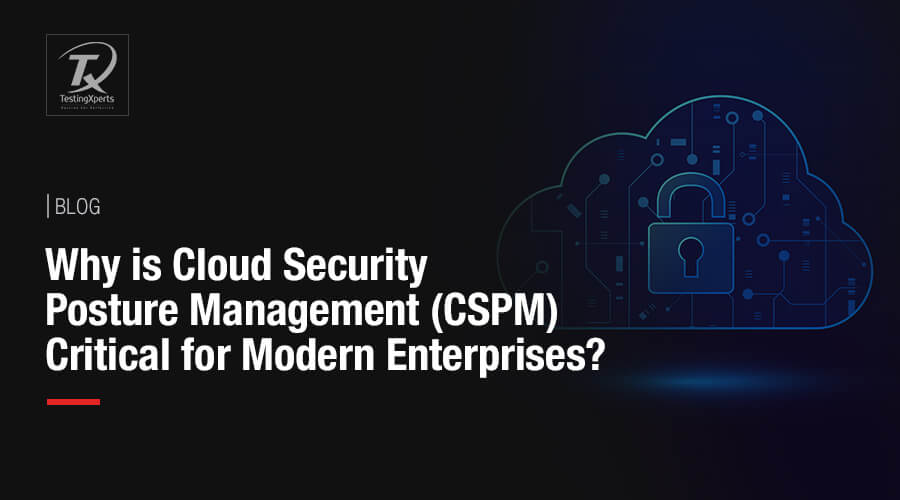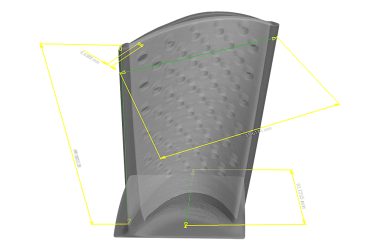- Cloud Security Posture Management (CSPM)
- Importance of CSPM for Modern Enterprises
- Risks Associated with Cloud Implementation
- Security Benefits of CSPM
- Compliance Benefits of CSPM
- How does Tx help Clients with CSPM?
- Summary
The emergence of cloud solutions offered unlimited opportunities for businesses to expand their operations. Now, the situation is like this: More and more businesses prefer cloud platforms because of their cost-efficiency, flexibility, and scalability capabilities. It also makes it easy for organizations to undergo digital transformation. However, with the facilities it provides, the security challenges also increase when organizations plan to increase their cloud footprint. One thing to notice here is that not having proper security protocols puts critical business information on the cloud at risk of getting hacked. Cloud security posture management (CSPM) is one of the tools that allows businesses to safeguard their cloud environments against misconfigurations and security vulnerabilities.
According to a report, 17% of companies experienced a public cloud security breach because of misconfigurations in their infrastructure. CSPM plays a critical role in detecting and preventing cloud vulnerabilities quickly. The global cloud service is undergoing significant growth, and businesses need robust security measures to safeguard their assets. CSPM allows organizations to continuously monitor and manage cloud resources and maintain a strong security posture. This ensures their data and applications remain secure against online threats.
Cloud Security Posture Management (CSPM)
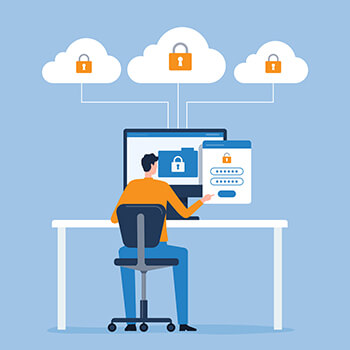
Before discussing the importance of cloud security posture management (CSPM), let’s define it. CSPM is a process of securing multi-cloud environments by using various tools and practices to identify misconfigurations and risks and remediate them. It allows businesses to continuously monitor their cloud infrastructure (IaaS, PaaS, and SaaS), for gaps (if any) in their security policy enforcement. It provides real-time visibility and automated remediation to maintain a strong security posture in the cloud. Let’s look in brief at what CSPM does for enterprises:
• CSPM tools continuously scan cloud environments to prevent data breaches that might occur due to misconfigurations or compliance violations.
• It offers holistic threat intelligence by integrating with other security systems and alerting security teams about threats in real-time to enable quick responses to mitigate risks.
• Enterprises get a centralized view of their cloud environment to effectively manage and control their assets.
• CSPM automates the remediation process when a risk is identified and does not require human intervention, reducing the time needed for detection and resolution.
• It reduces costs associated with cloud security management by automating routine tasks and ensuring optimal configurations.
• Ignoring CSPM could lead to data breaches, reputation damage, and non-compliance fines. Because cloud environments are dynamic and complex, enterprises need an automated solution to manage security posture, and CSPM is the answer.
Importance of CSPM for Modern Enterprises
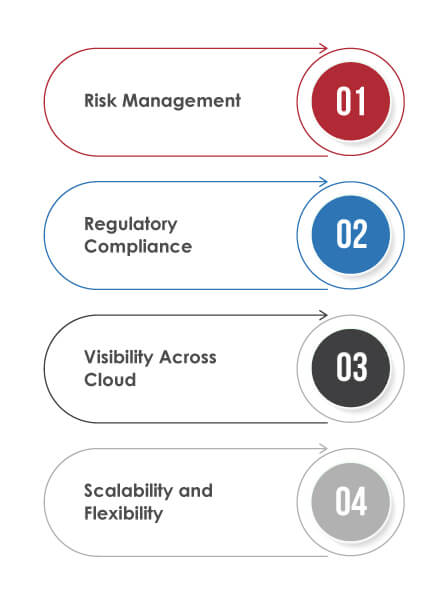
CSPM solutions are vital assets for modern enterprises, as they need to manage, operate, update, and protect complex and dynamic multi-cloud environments where cybersecurity risks, misconfigurations, and compliance issues are common. Traditional security measures are insufficient to handle the security blind spots in this digital business age. CSPM fills these gaps by assisting enterprises in enforcing security policies and addressing potential risks.
Risk Management:
Misconfigurations are the leading cause of security incidents in a cloud environment. CSPM tools allow enterprises to identify and manage risks proactively by scanning for misconfigurations and automating remediation processes. Using CSPM tools, enterprises can prevent breaches before they occur.
Regulatory Compliance:
There are plenty of regulations to govern data security and privacy, varying from region to region. CSPM ensures enterprises that their cloud deployment complies with data privacy laws and standards such as GDPR, HIPAA, PCI-DSS, etc. Enterprises can avoid legal and financial penalties that might arise from non-compliance.
Visibility Across Cloud:
CSPM offers enhanced visibility across cloud infrastructure with detailed insights into resource configurations, network traffic, and user activities. Security teams can quickly identify and respond to threats to reduce unauthorized access and data breach risks.
Scalability and Flexibility:
Cloud environments become more complex as enterprises grow. CSPM offers a scalable solution to accommodate this growth and continuously monitors and secures new configurations, which are added over time. This ensures security growth alongside the company’s growth without compromising performance and protection.
Risks Associated with Cloud Implementation

Cloud infrastructure offers simple and standard scalability options. Although increasing scalability has its own merits, it also increases complexities. This, in turn, introduces unique security challenges, and understanding these risks is important for CSPM strategies implementation:
Misconfigurations:
Misconfigurations are common in cloud environments, causing significant security vulnerabilities. Errors like misconfiguring access controls or leaving the storage bucket open to the public expose sensitive data to malicious actors that can hamper cloud resources’ security.
Shadow IT:
Shadow IT means using IT systems and solutions inside premises without the approval of higher entities. This could lead to unmanaged and unsecured applications in cloud environments, which increases enterprise risk exposure.
Lack of Visibility:
Cloud environments are dynamic in nature, which raises visibility challenges for overall resources and activities. The lack of visibility hinders the enterprise’s ability to quickly detect and respond to security incidents, increasing the risk of data breaches.
Vendor Lock-in:
Relying on a sole cloud service provider causes vendor lock-in. This makes it difficult and costly for an enterprise to switch providers or integrate new services. It also limits flexibility in negotiating terms and accessing features from competitors.
Compliance Violations:
One critical concern for modern enterprises when implementing cloud services is compliance with industry regulations and standards. However, this is a complex process due to the shared responsibility model. A failure could result in legal penalties and damage to the brand’s reputation.
Security Benefits of CSPM
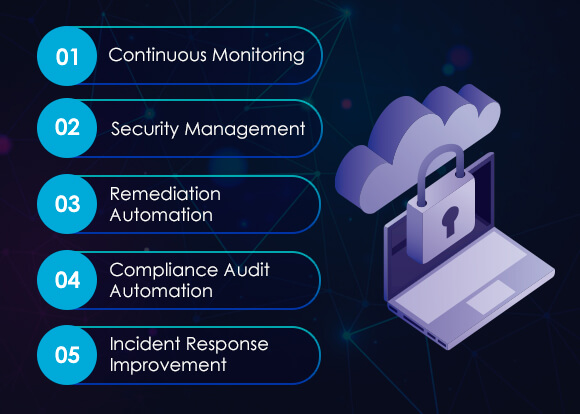
Cloud security posture management delivers substantial security benefits to modern enterprises operating in a cloud infrastructure. Cyber threats constantly evolve, and governments regularly update their regulatory demands. CSPM is a critical asset that provides the necessary tools to enable enterprises to maintain their robust security stance and ensure the cloud environment is compliant and secure. Let’s take a close look at some of the security benefits of CSPM:
Continuous Monitoring:
Enterprises can continuously monitor cloud environments to ensure their security policies are consistently followed. Its real-time monitoring feature detects and mitigates threats quickly, reducing security breach risk.
Security Management:
It simplifies security policy management by offering a unified view of security parameters across a cloud environment. It supports centralization to allow consistent application of cloud security measures, which reduces gaps in a decentralized environment.
Remediation Automation:
One key feature in CSPM tools is automated remediation. After detecting a vulnerability or misconfiguration, these tools automatically apply preventive measures. This, in turn, reduces the time and effort enterprises spend on addressing security issues while improving security efficiency.
Compliance Audit Automation:
Enterprises can automate their compliance audit process with various regulations such as PCI-DSS, GDPR, and HIPAA. It helps them consistently meet regulatory requirements without assigning their manual workforce, reducing non-compliance penalties.
Incident Response Improvement:
A cloud security posture management strategy can enhance enterprises’ incident response capabilities by enabling detailed insights and automated alerts. They can quickly identify and respond to potential threats to minimize the impact of security incidents on business operations.
Compliance Benefits of CSPM

In addition to improving security, cloud security posture management tools assist enterprises in achieving and maintaining regulatory compliance and standards. It automates and streamlines compliance processes to ensure cloud environments adhere to industry standards and regulatory requirements. Let’s take a close look at a few compliance benefits of CSPM:
Simplified Compliance Management:
Enterprises can streamline compliance management with automated checks and reports. CSPM simplifies adhering to regulatory requirements and reduces the workload of security and compliance teams.
Simplified Multi-cloud Environment Management:
Enterprises use services from multiple cloud vendors. CSPM offers a unified cloud management solution across all platforms. It also simplifies the complexities related to managing mult-compliance standards.
Policy Implementation:
Enterprises can ensure that security and compliance policies are consistently implemented and followed across all cloud resources. CSPM automates policy enforcement to reduce human error risks and ensure uniform security protocols.
Comprehensive Compliance Reporting:
CSPM tools provide comprehensive reports containing compliance status, areas of concern, and updates done. These reports are useful during external/internal audits and simplify compliance verification. The detailed audit trail helps identify and address compliance gaps.
How does Tx help Clients with CSPM?

At Tx, we are committed to helping our clients manage the complexities of cloud security with our comprehensive cloud security posture management solutions. Our approach meets clients’ requirements, ensuring their cloud environments are resilient, secure, and compliant.
• We understand each enterprise has unique security requirements. Our customized CSPM solutions allow us to address those needs, whether it’s continuous monitoring, compliance management, or automated remediation. We offer solutions that fit our clients’ cloud strategies.
• Our team of cloud security experts provides ongoing client support and guidance from initial deployment to continuous management to ensure their security posture is robust and effective.
• Our tools integrate with major cloud platforms to provide visibility and control over cloud environments. We ensure our clients benefit from the latest advancements in cloud security.
Summary
As companies focus on improving their digital transformation processes, ensuring robust cloud security has become more important than ever. Cloud security posture management (CSPM) plays a crucial role in assisting enterprises in solving the complexities of cloud security. It offers proactive risk management, automated compliance, and enhanced visibility across the cloud environment. At Tx, we are dedicated to helping our clients achieve a secure and compliant cloud environment through our tailored CSPM solutions. As cloud adoption continues to grow, investing in CSPM is not just a best practice but a necessity for safeguarding the future of modern enterprises.
The post Why is Cloud Security Posture Management (CSPM) Critical for Modern Enterprises? first appeared on TestingXperts.


